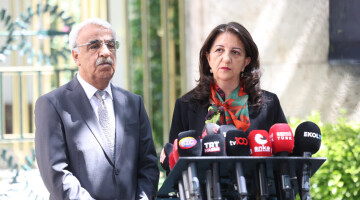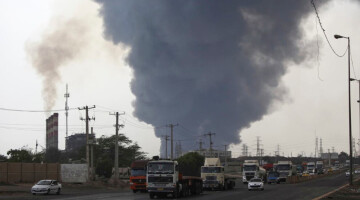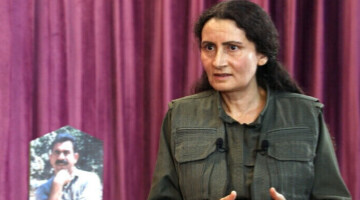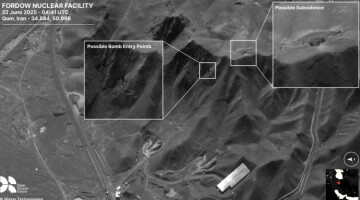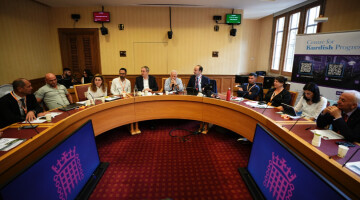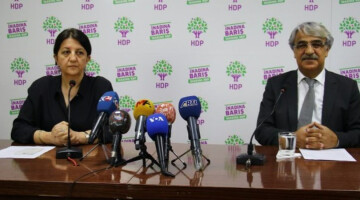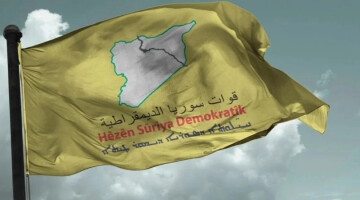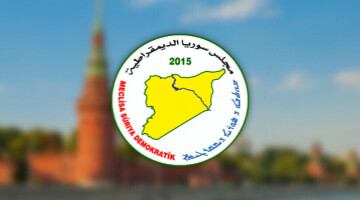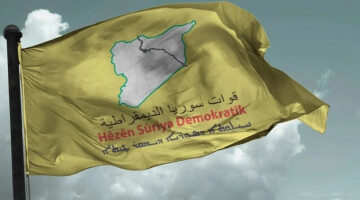Defying the Baath regime's oppression, bans and attacks, people in Rojava did not stop celebrating Newroz. After Mazlum Doğan, Newroz regained its true essence in Rojava, based on resistance. Today, it is celebrated all over North-East Syria as a major popular event against colonialists and invaders.
For years, Newroz celebrations were forbidden in Syria, as in Turkey. Many people were killed because of the bans. In 1986, Baath forces attacked thousands of Kurds who flocked to the streets to celebrate Newroz in Damascus, and Silêman Adê was martyred. Even after the murder of Silêman Adê, people continued their resistance. As they did not cease celebrations to welcome Newroz, the Baath regime declared March 21 public holiday as Mother's Day in 1988 and banned any other event on March 21. A year after the attack in Damascus, the regime arrested many people during the Newroz celebrations in the Haydariyah neighborhood of Aleppo.
The Baath regime increased its pressure on those celebrating Newroz after the uprising on March 12, 2004. Despite the regime crackdown, the people of Qamishlo celebrated Newroz from March 12 to March 21 enthusiastically at Martyr Xebat Square in the Hilêliyê neighborhood of Qamişlo. The people gathered together, chanted slogans and sang revolutionary songs for hours. They turned Newroz into an uprising against the Baath regime.
The Baath regime attacked those who made bonfires in front of their houses at night to celebrate Newroz in Qamishlo in 2008 and killed three more young people.
In 2010, the regime attacked people again, this time in Raqqa. Regime forces attacked the Newroz celebrations in the city, killing two young people and a woman, and injuring dozens of others. In the same year, thousands of Kurds were arrested during the celebrations in Aleppo and Damascus and were tried by military courts.
NEWROZ AFTER ROJAVA REVOLUTION
After the establishment of the Autonomous Administration, all the peoples living in North-East Syria participated in the Newroz celebrations in mass. Newroz was celebrated in 2014 under the motto "Democratic Autonomous Administration is a democratic model in multicoloured Syria". The following year, two attacks took place in Hesekê on the night of Newroz and 53 people from the city lost their lives, while 130 others were injured. Thousands of people attended the funeral ceremonies for the victims. The people welcomed Newroz with this spirit.
Newroz was celebrated in 2016 under the slogan "From a free Rojava to a democratic federal Syria".
In 2017, Newroz was celebrated for the first time after the liberation of eastern Aleppo from ISIS, with an emphasis on the unity of the democratic nation created by the North-East Syrian revolution.
In 2018 Newroz, which took place at a time when Afrin was under occupation, people flocked into the streets under the motto "The resistance of the Afrin people will be the Newroz of the peoples". The following year, the slogan "Let's break the isolation and liberate Afrin with the spirit of Newroz" was chanted frequently in the Newroz areas, calling attention to the aggravated isolation regime imposed on Öcalan.
In 2020, when the Corona pandemic was striking the world, celebrations were held in small groups. Bonfires were lit in all cities of Rojava, and traditional dance was performed around them and slogans were chanted.
In 2021, Newroz was once again celebrated with huge enthusiasm. The celebration took place under the motto "Let's defeat the invaders with the spirit of resistance", vowing that the occupied lands would be liberated with the spirit of the Revolutionary People's War. Last year, people chanted the slogan "The time has come for Abdullah Öcalan's freedom".
NEWROZ CHANGED AFTER 1982
Writer Melevan Resul spoke to ANF about the Newroz celebrations in the region over the years. Resul remarked that Newroz had been celebrated under different meanings in the 1980s. He said: “I was a child at the time when people regarded Newroz as a picnic-like event. Political parties did not treat it as a day of resurrection or revolt. It was celebrated by the Pêşveru Party for the first time in 1980 but was restricted to statements and open-air events.”
Resul pointed out that there was a change in the way Newroz was celebrated in 1982. He continued: “The self-immolation of Mazlum Doğan in the Amed prison made a major splash in Rojava Kurdistan. Especially in those times, there was a revolutionary wave in the region. The Freedom Movement had started to carry out activities in Rojava. They were very popular in public. Mazlum Doğan inspired a spirit of rebellion among the people of Rojava. Newroz became a spirit of resistance and 'Berxwedan jiyan e' (Life is resistance) became the motto of Newroz in Rojava. Newroz turned from a festival celebrated like a picnic to a festival of resurrection.”
REVOLUTIONARY SPIRIT GREW OVER THE YEARS
Resul pointed out that the people affiliated with the Kurdish Freedom Movement gradually formed folklore, theatre and music teams after 1982. He said: “It grew over the years. Celebrations were held from Dêrîk to Afrin as a festival of resurrection. In particular, the martyrdoms in Bakure (North) Kurdistan affected the people very much. People became more furious at the murders of Kurds. Participation in the guerrilla ranks from the region began to increase. The attacks of the Baath regime also increased during this period. Newroz was celebrated in private. People who were celebrating Newroz were arrested. There are dozens of such examples, but the spirit of rebellion did not disappear for a minute.”
NEWROZ CELEBRATED ALSO IN EAST GHOUTA
Resul remarked that in 1986, Sileyman Adê became the first Newroz martyr in Rojava. He recalled that the Syrian regime attacked the Newroz celebration in Raqqa in 2010, and a new process started following the Adana Agreement signed between Syria and Turkey. “Our people have never ceased Newroz celebrations. Celebrations are welcomed more gloriously and enthusiastically every year than the previous year. Following the 1998 Adana Agreement, violence, repression and detentions increased. Those who wore Kurdish dresses or yellow-red-green bracelets and clothes faced violence without exception and were arrested. An unknown number of people disappeared in this way. On March 12, 2004, oppression and violence ended up in a massacre. However, there was no mourning for the massacre, people made laments to take revenge. Newroz was celebrated on March 12 in 2004 with the spirit of resistance.”
SPIRIT OF NEWROZ CAME TO A HEIGHT AFTER REVOLUTION
Resul emphasized that after the Rojava Revolution, not only the Kurds, but all peoples obtained the freedom to freely express themselves with their own culture. He concluded: “People started to celebrate their national, religious and social festivals freely. Mazlum Doğan's resistance in 1982 came to a height on July 19 and became the beginning of a new year and a symbol of struggle.”


